25 Renal Stones
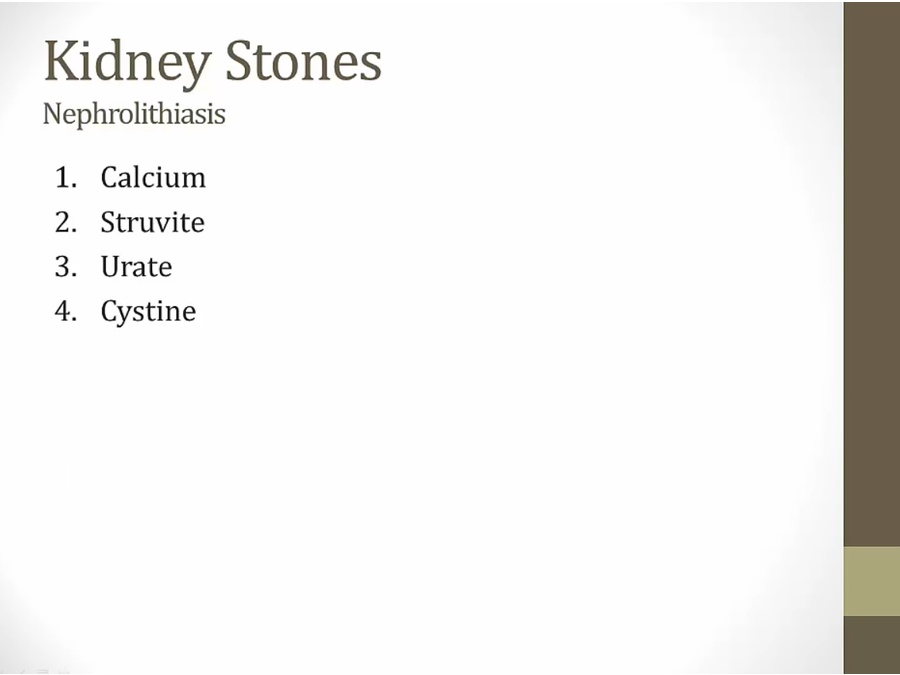

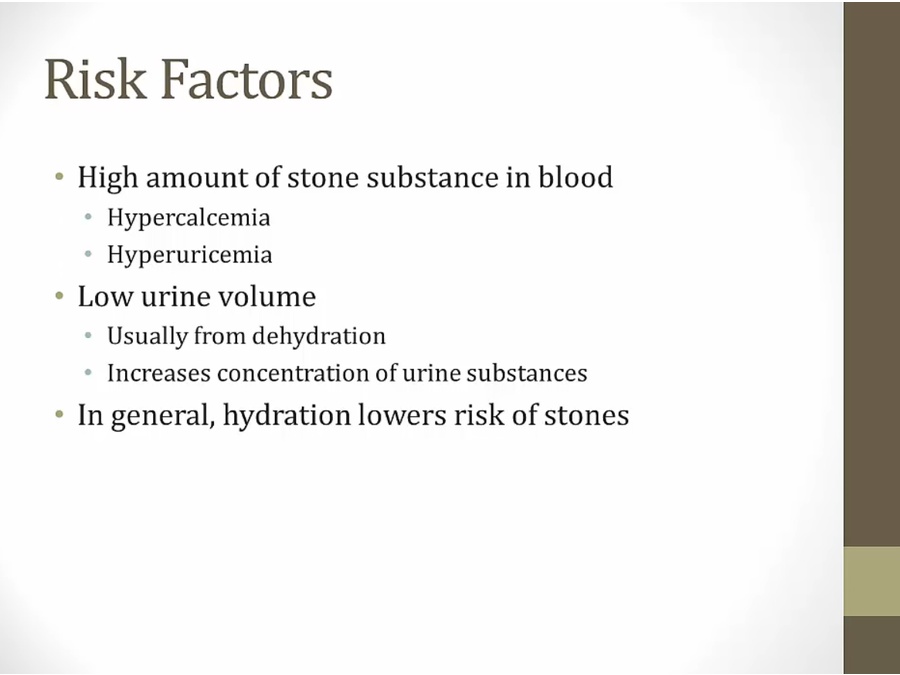
Calcium

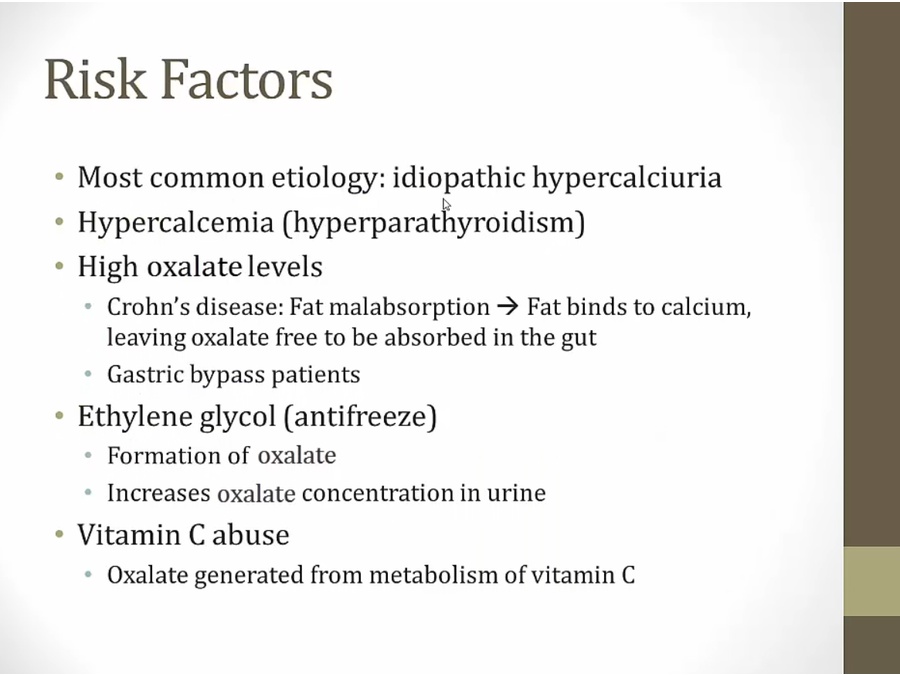
- idiopathic hypercalciuria: normocalcemia, no idea why
- gastric bypass: fat malabsorption, high ox
- too much vit C
- Crohn's: Under normal circumstances, calcium binds oxalate in the gut and prevents its absorption. In patients with fat malabsorption, calcium is preferentially bound by fat leaving oxalate unbound and free to be absorbed into the bloodstream. Failure to adequately absorb bile salts in states of fat malabsorption also cause decreased bile salt reabsorption in the small intestine.
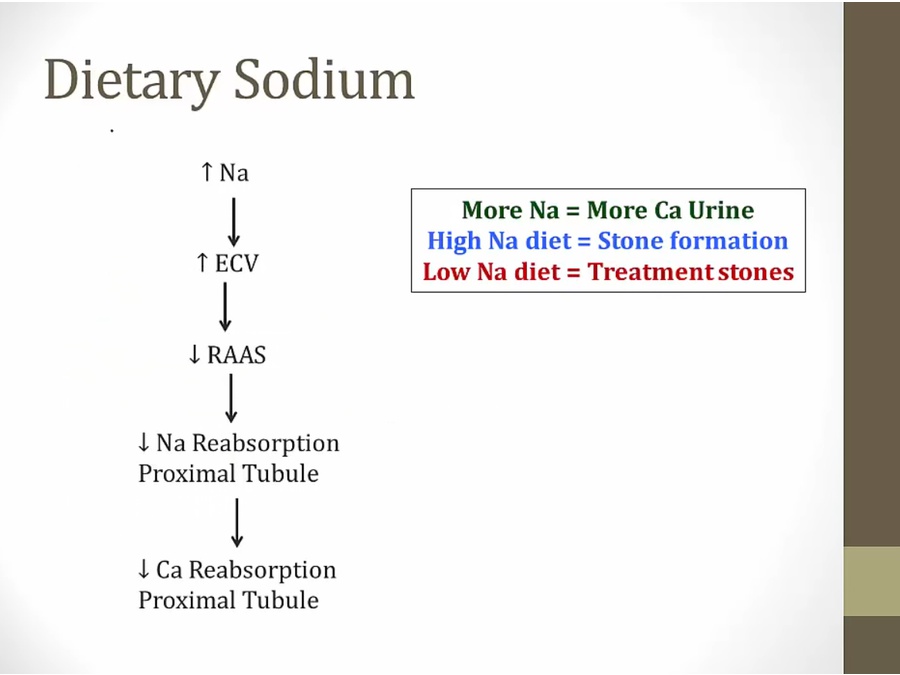
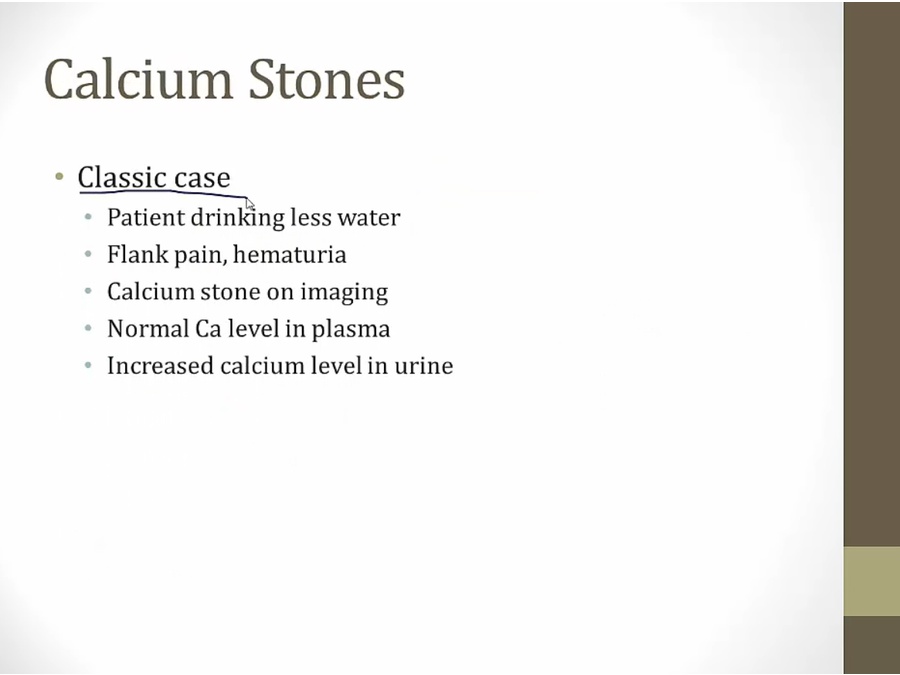
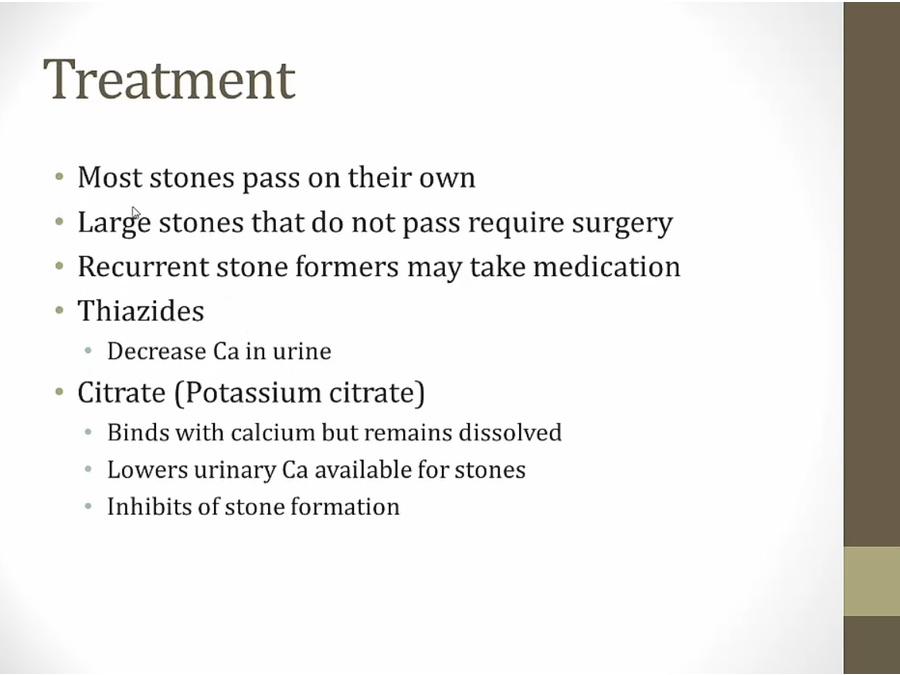
Struvite
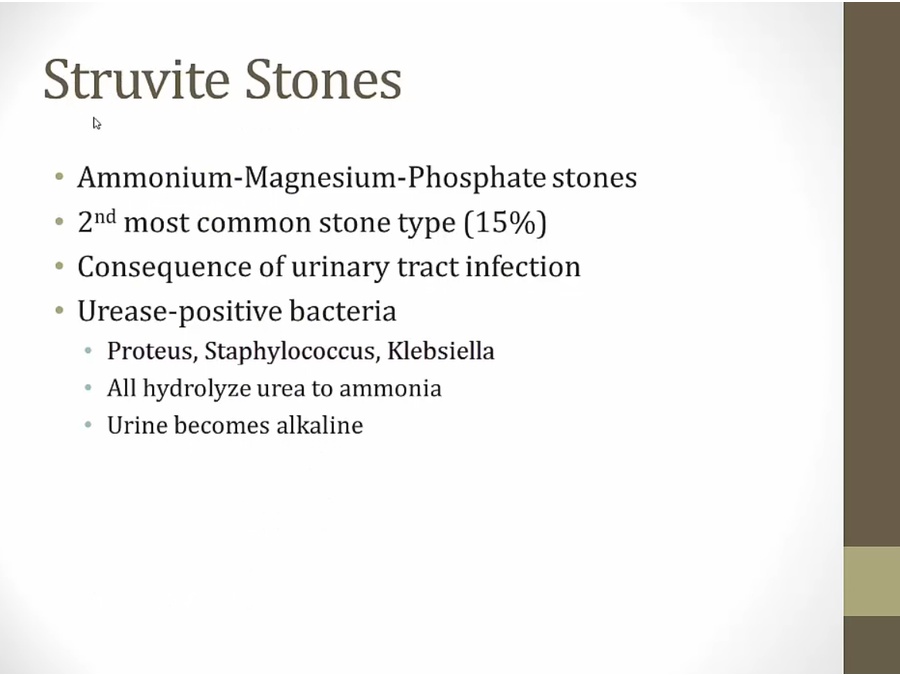
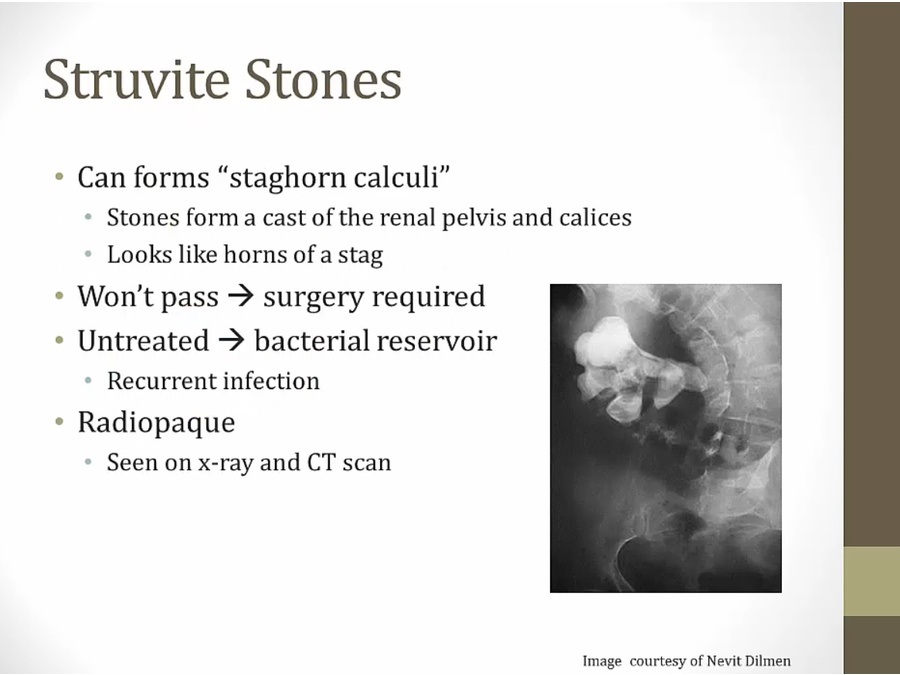

- stone higher up in kidney, not as intense as Ca
Uric Acid
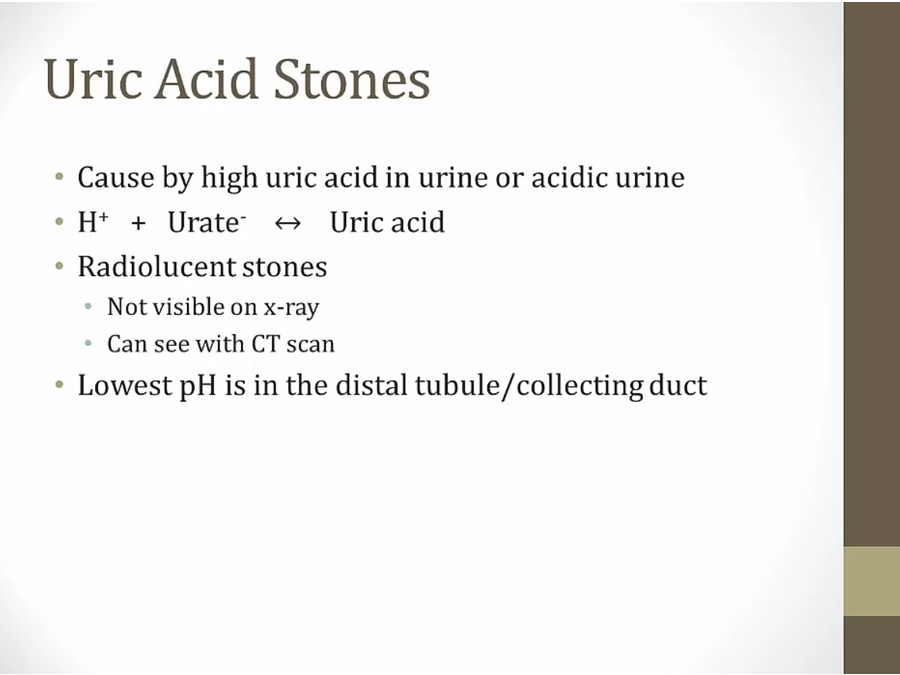
- DCT, CD common site for uric acid formation
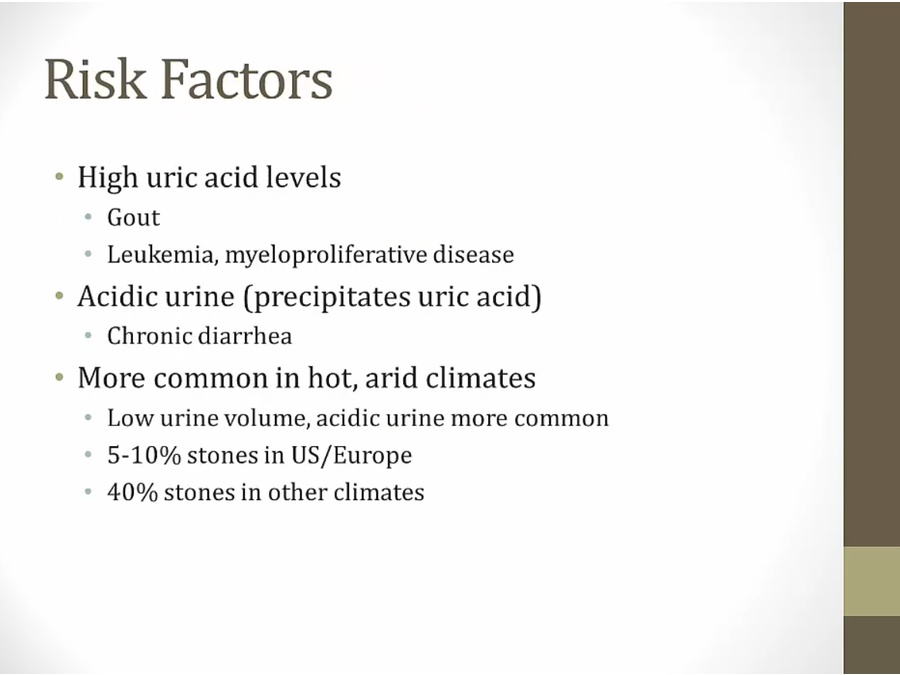

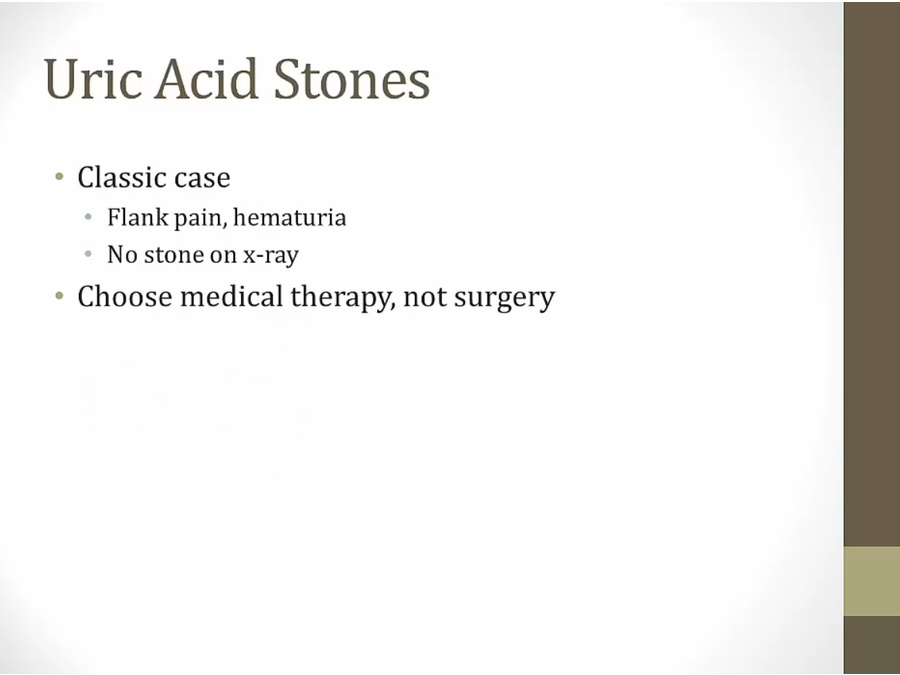
Cysteine
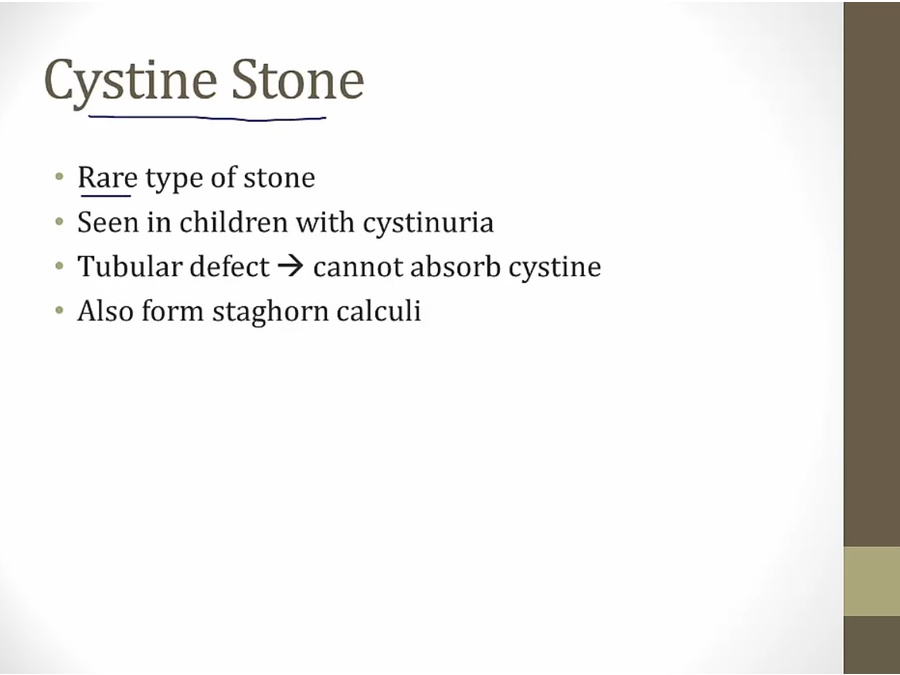
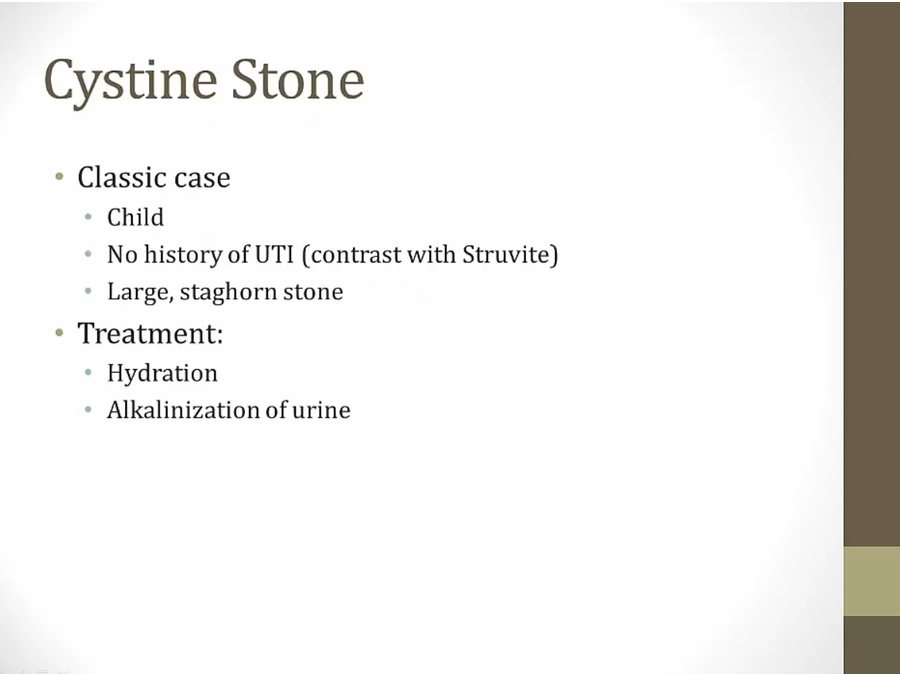
Recurrent nephrolithiasis in a young patient should raise suspicion for cystinuria, which is confirmed by the pathognomonic finding of hexagonal-shaped crystals on urinalysis. Cystinuria is an autosomal recessive disorder affecting the high-affinity, sodium-independent dibasic amino acid transporter found on the apical membrane of intestinal and proximal renal tubular epithelial cells. This prevents dibasic amino acids ( eg, cysteine, ornithine, lysine, and arginine) from being reabsorbed in the proximal renal tubules, leading to urine supersaturation with cystine and formation ofcystine stones (ornithine, lysine, and arginine are relatively soluble in the urine and do not form stones).
Patients with suspected cystinuria without cystine crystals on urinalysis can be diagnosed by detecting elevated urinary cysteine levels (ie, aminoaciduria). The sodium cyanide-nitroprusside test is a qualitive screening test that detects the presence of urinary cystine. Cyanide is initially added to the urine, converting cystine to cysteine. Afterward, nitroprusside is added and reacts with the sulfhydryl group on free cysteine, causing a red-purple discoloration (positive test). Treatment of cystinuria involves increasing hydration and** urinary alkalinization** (eg, acetazolamide).